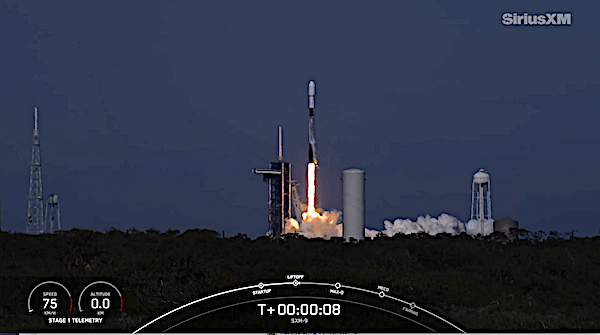
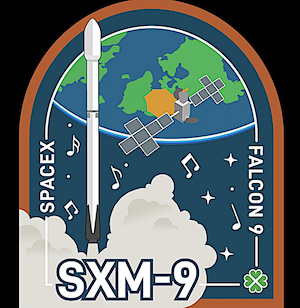
On Thursday, December 5 at 11:10 a.m. ET, Falcon 9 launched the SiriusXM SXM-9 mission to geosynchronous transfer orbit from Launch Complex 39A (LC-39A) at Kennedy Space Center in Florida. SXM-9 measures 27 feet (8 meters) tall, and stretches to 100 feet (30 meters) long with its two solar panel arrays unfolded. The satellite was designed and manufactured by Maxar Technologies, and based on Maxar’s SSL-1300 satellite bus. The last SiriusXM satellite mission occurred in 2021, launching SXM-8.
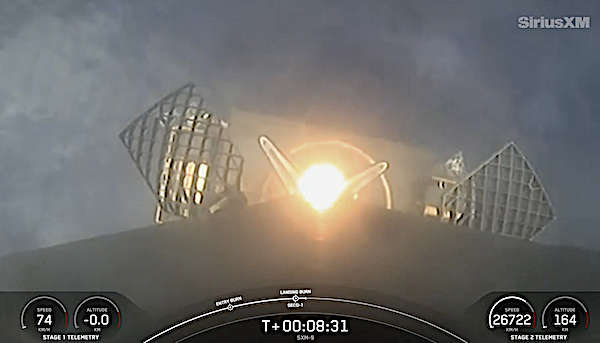
Today’s touchdown was a record of 388 successful recoveries.
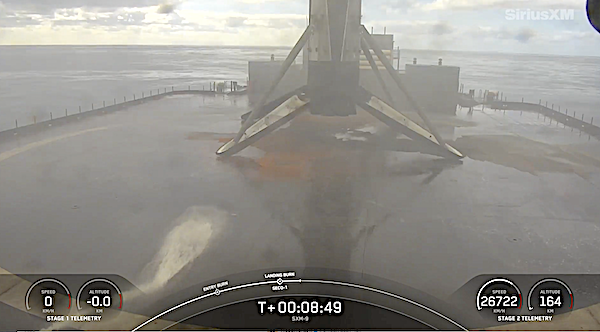
This was the 19th flight for the Falcon 9 first stage booster supporting this mission, which previously launched CRS-26, OneWeb Launch 16, Instelsat IS-40e, O3B mPOWER, Ovzon 3, Eutelsat 36D, Turksat 6A, Maxar 2, and 10 Starlink missions.

SXM-9 is built on Maxar’s1300 series bus as part of a deal that was announced by Maxar back in August 2021.
This was the second satellite launched for SiriusXM since the on-orbit failure of SXM-7, which launched back in December 2020. The roughly 8.2-meter-tall (27 ft), 7,000 kg (15,432 lb) SXM-8 launched in June 2021 and completed on-orbit testing a month later.
“Maxar’s 1300-class platform has served as a reliable spacecraft platform for decades, and we’re glad to see SiriusXM will rely on its performance once again,” said Robert Curbeam, Maxar Senior Vice President of Space Capture, in a 2021 statement. “We’re looking forward to continuing our decades-long relationship with SiriusXM.”
SpaceX ready to launch SiriusXM SXM-9 on Thursday

SpaceX is targeting Thursday, December 5 for launch of the SiriusXM SXM-9 mission to geosynchronous transfer orbit from Launch Complex 39A (LC-39A) at Kennedy Space Center in Florida. The 90-minute window opens at 11:10 a.m. ET. If needed, a backup launch opportunity is available on Friday, December 6 during a two-hour window that opens at the same time.
A live webcast of this mission will begin about 15 minutes prior to liftoff, which you can watch here and on X @SpaceX. You can also watch the webcast on the new X TV app.
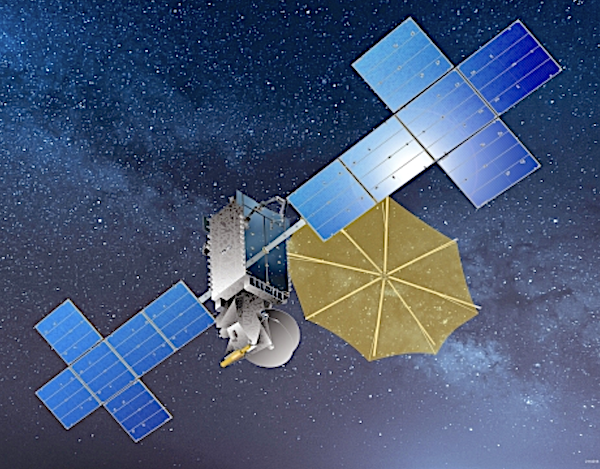
This will be the 19th flight for the Falcon 9 first stage booster supporting this mission, which previously launched CRS-26, OneWeb Launch 16, Instelsat IS-40e, O3B mPOWER, Ovzon 3, Eutelsat 36D, Turksat 6A, Maxar 2, and 10 Starlink missions. After stage separation, the first stage will land on the Just Read the Instructions droneship, which will be stationed in the Atlantic Ocean.
“SXM-9 is the 10th high-powered, digital, audio radio satellite built by Maxar (SSL) for SiriusXM,” released by the space center’s website.
In 2021 Maxar released: “Maxar’s 1300-class platform has served as a reliable spacecraft platform for decades, and we’re glad to see SiriusXM will rely on its performance once again,” said Robert Curbeam, Maxar Senior Vice President of Space Capture. “We’re looking forward to continuing our decades-long relationship with SiriusXM.”
